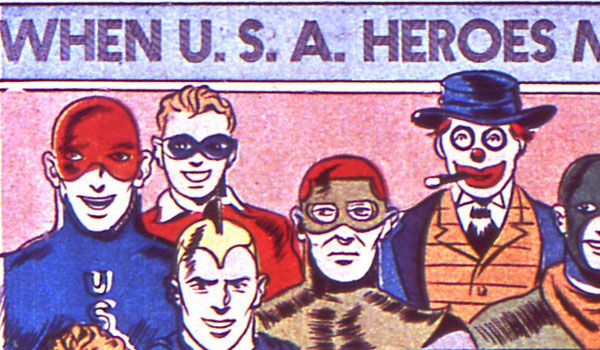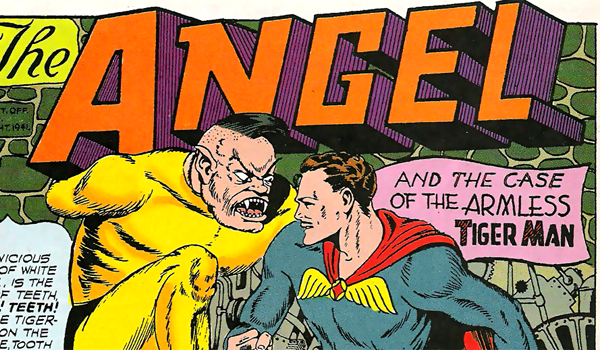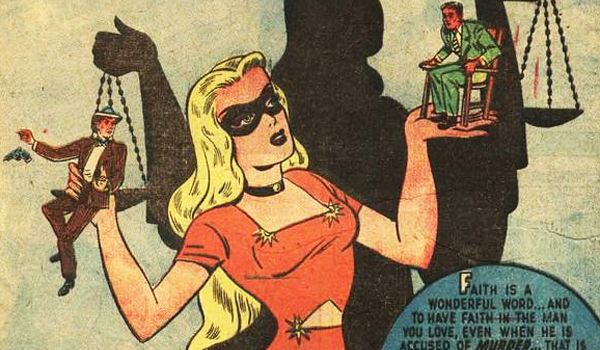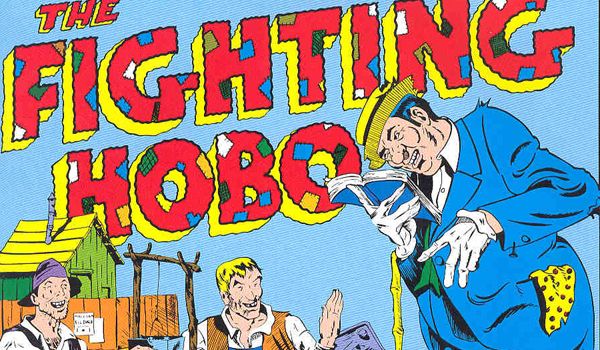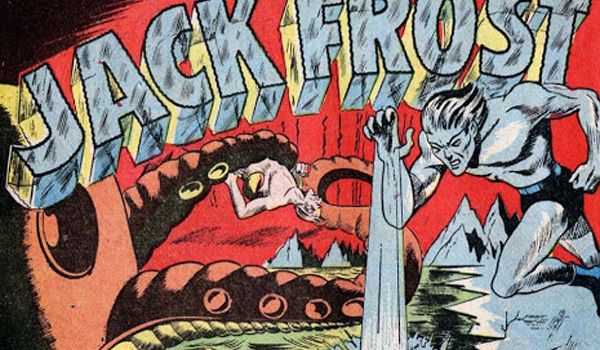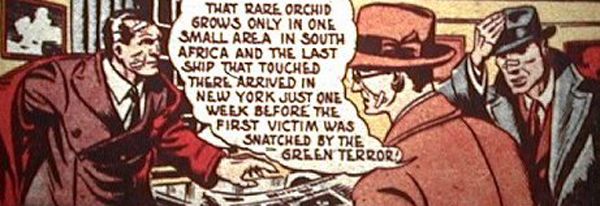Before Spider-Man, before the Fantastic Four, before even Captain America, Marvel was creating superheroes. Sure, the publisher went by Timely rather than Marvel, but it had costumed heroes -- in spades. Some, like Namor, Ka-Zar and the Human Torch, were dusted off years later as memorable guest stars in other books or for trivial flashback appearances, but these veterans of the publisher's first experiments ith the superhero genre are largely forgotten anecdotes in the publisher's path to greatness. For some, it's unfortunate -- but for others, it's perhaps for the best.
In this installment of ROBOT 6's Six by 6, we cherry-pick six heroes of the late 1930s and early 1940s that didn't fare as well as Captain America or the Sub-Mariner, and talk about when they have popped up since and why some have never been seen again.
The Angel
No, this isn't longtime X-Man Warren Worthington III. This time-lost character actually has more in common with Batman than with the high-flying mutant. Debuting in Marvel Comics #1 in 1939 alongside the original Human Torch, the Angel is a costumed crimefighter who had no powers besides his deductive mind. During World War II, the Angel was one of Timely's top heroes after the big three of Captain America, Namor the Sub-Mariner and the Human Torch, but in the post-war superhero decline, the Angel fell by the wayside. He has popped up from time to time in flashback adventures such as as in 2009's The Marvel Projects and as a mind-generated clone to help in 1972's Kree-Skrull War, but his most renowned post-WWII appearance was as the financial backer of Scourge of the Underworld, a hitman who assassinated lesser-known heroes and villains in the 1980s. Recently his costume and weapons were inherited by his grandson, but a new Angel has yet to appear on the scene in Marvel comics.
The Blonde Phantom
The Blonde Phantom debuted in 1946, as World War II had faded and Timely was looking to branch out to sell comics to young, female readers. Created by Stan Lee and Syd Shores, she took over All Select Comics in 1946 and continued there for three years while also showing up in back-up stories for various other titles. She was the secretary of private detective Mark Mason who took up her superhero guise to win over her boss and solve cases on her own. Without superpowers of her own, the Blonde Phantom relied on martial arts and a trusty .45-caliber pistol to win fights. She reemerged in the late 1980s issues of The Sensational She-Hulk as a supporting character who occasionally stepped into the spotlight as a hero once more. She had a daughter who joined the family business, calling herself the Phantom Blonde, but she has yet to make a major impact.
The Fighting Hobo
At first glance this might seem like a comedic one-off or an errant idea, but for a time there was a trend for heroic hobos; they wandered the world fighting crime and living life in a happy-go-lucky manner. And the Fighting Hobo wasn't the first -- that honor belongs to a similar hero named the Vagabond. But the Vagabond was hinted at being a police officer in disguise, while for all intents and purposes the Fighting Hobo was the real deal. Debuting in 1942's U.S.A. Comics #5, the tramp hero was Butch Brogan (a great comic name!), and he knew as much about the works of Shakespeare as he did about cleaning a catfish. Sadly, he has yet to make a second appearance.
Jack Frost
Iceman? Not quite. This 1941 character was one of Stan Lee's first contributions to Marvel lore, created with Frank Giacoia and Carmine Infantino. Based on the spirit of winter from European folklore, Jack Frost fought for the Allies in World War II as part of the Liberty Legion, even facing off against his elemental opposite the Human Torch. Nicknamed "The God of Ice" at the time, it's never been revealed if Jack Frost was the character of folklore or merely a super-powered human who took up the name.
The 3Xs
What was Marvel's first superhero team? The Fantastic Four? The Invaders? Wrong, it was the 3Xs. Appearing in just one issue, 1940's Mystic Comics #1, the 3Xs were a trio of plain-clothes detectives, each with a unique ability. 1X was a detective, 2X had a high intellect and 3X was the muscles. Decades before Marvel would make coin with the letter "X," the 3Xs were fighting crime against the likes of the Green Terror. Who is the Green Terror? That's another story for another day.
The Blazing Skull
A lost classic and a personal favorite, the Blazing Skull is a World War II-era hero with a frightening visage that predates the the modern Ghost Rider by decades. Introduced in 1941 in the pages of Mystic Comics #5, the Blazing Skull was an embedded journalist covering Japan's war in China. During a horrendous air bombardment, the reporter sought shelter in a mysterious cave, where he found a strange race of beings with burning skulls for heads called the Skull Men. Persuaded by talk of "destiny" and great power, the simple man was trained to become the Blazing Skull, who fought against the Nazis on his own and alongside the Invaders. The Blazing Skull reappeared briefly in the modern era, first as a member of a new incarnation of the Invaders and then as part of the Fifty State Initiative version of the Defenders.

